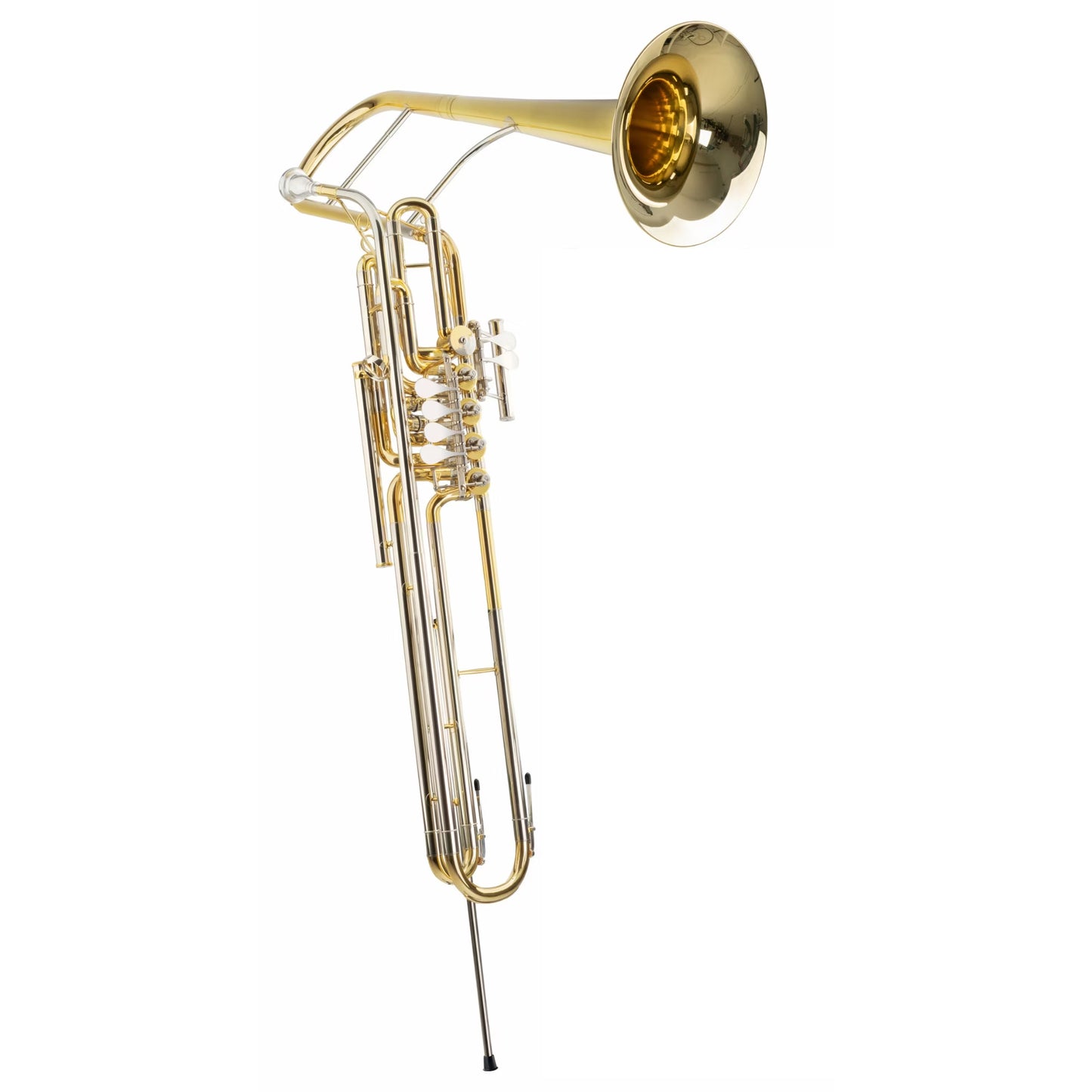1
/
of
1
Focustyle Studio FCM-500 Cimbasso
Regular price
$3,599.00 USD
Regular price
$3,999.00 USD
Sale price
$3,599.00 USD
Taxes included.
Shipping calculated at checkout.
Click "shipping" to view our shipping policy
No reviews
Products not marked as in stock are made to order,typically taking 2-4 weeks.
Quantity
Couldn't load pickup availability
- Key: F
- 286mm Bell Dia.
- 18.4mm bore
- Full Nickel silver slides
- 5 valves, trigger on the second slide
- thumb ring, 2 water keys
- Lightweight foam body case
The cimbasso is a low brass instrument in the orchestral family, typically pitched in F (or sometimes E♭), with a range matching that of a tuba or contrabass trombone. It features a predominantly cylindrical bore, a front-facing bell (often pointing slightly downward when played), and usually 4–6 rotary or piston valves for chromatic playing. Modern versions stand about 120 cm tall, rest on an adjustable spike or tail-pin, and use a deep cup mouthpiece similar to a tuba's, making it playable by tubists. Unlike the broader, more conical tuba, the cimbasso produces a darker, more focused tone that blends seamlessly with trombones, which is why it's prized for its role as the bass voice in brass sections.
The modern cimbasso evolved from Verdi’s vision for a “trombone basso Verdi” in the late 19th century, explicitly designed as a valved bass trombone for his operas. This historical link ties it directly to the trombone family, despite its use of valves (like some modern bass trombones) instead of a slide. In practice, the cimbasso often doubles or replaces the bass trombone or contrabass trombone in orchestral settings, reinforcing its role within the trombone family rather than as a standalone tuba-like instrument.
Today, the cimbasso is primarily a doubling instrument for tuba players in orchestras, especially for late-Romantic Italian opera. Its distinctive timbre has also appeared in film scores (e.g., Hans Zimmer's Inception and Call of Duty soundtracks) and even jazz big bands. It's not a transposing instrument and is valued for agile technique—faster than a slide contrabass trombone due to its valves—while maintaining a "cool air stream" blow compared to the tuba's warmer airflow.


